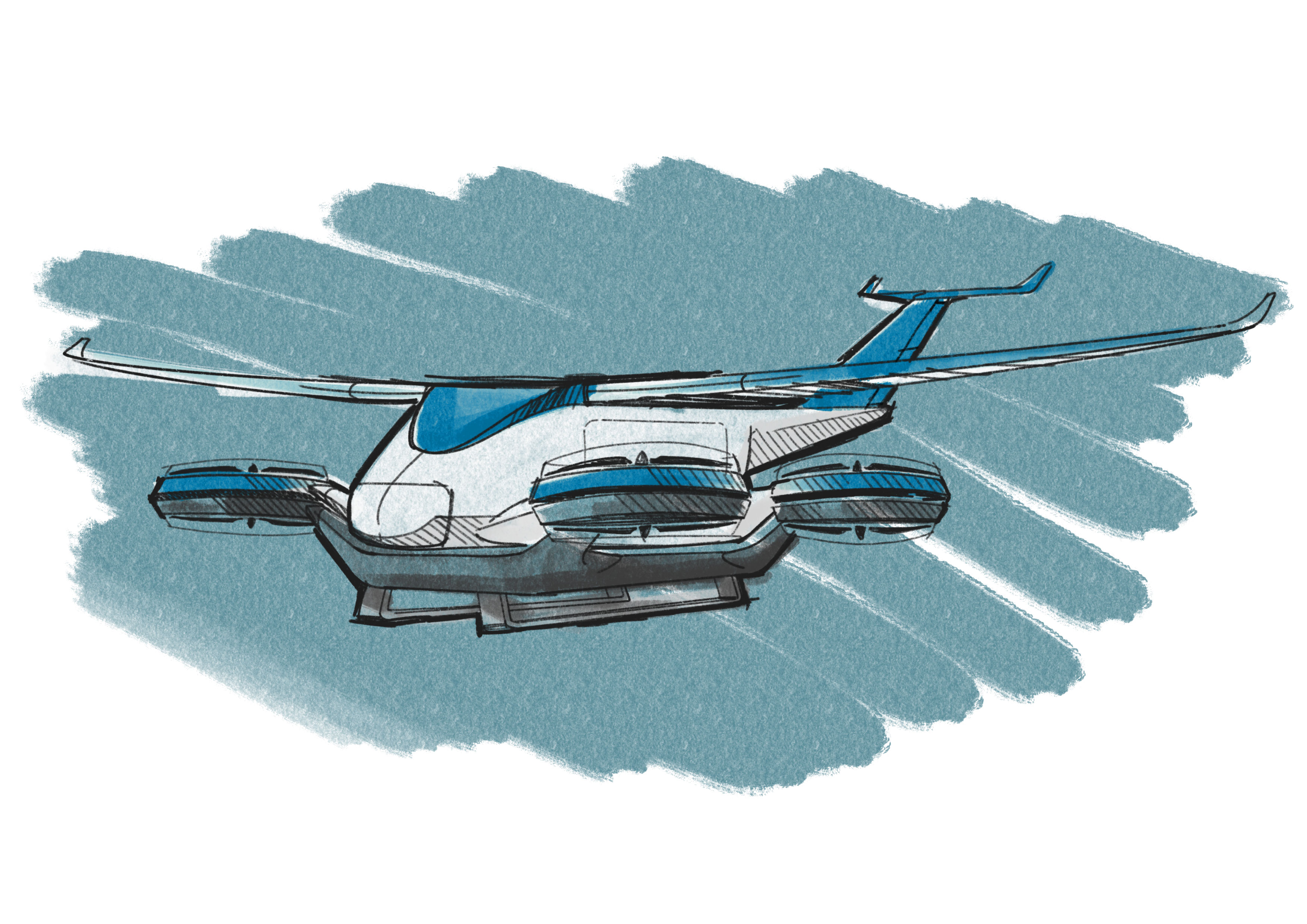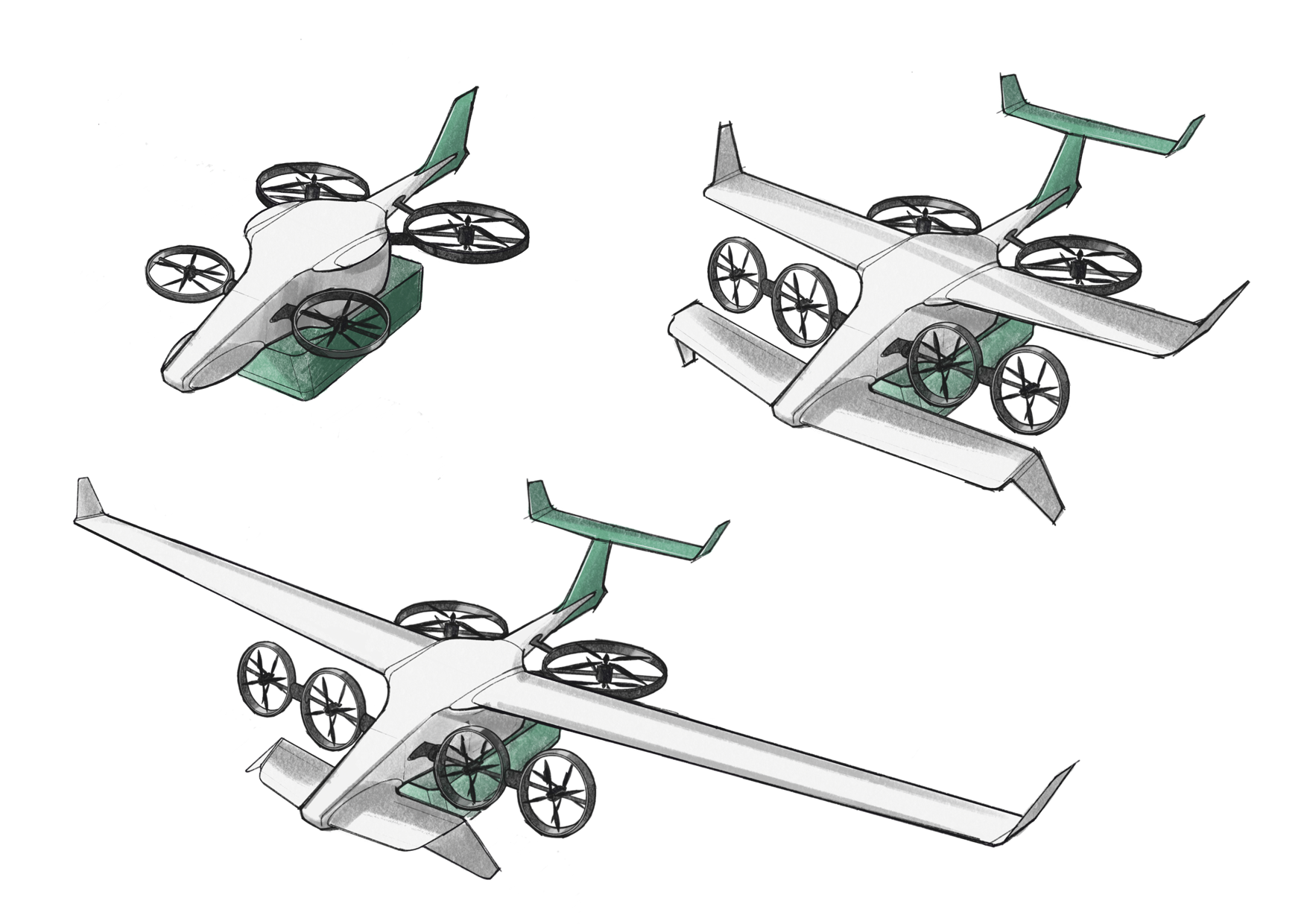The German Federal Government's »Unmanned Aircraft Systems and Innovative Aviation Concepts« action plan is currently paving the way not only for the development of drones and air taxis, but also for the targeted implementation of »automated and connected aviation«. This way, Germany aims to establish itself as the leading market for unmanned aircraft systems.
Due to the diversity of missions, Urban Air Mobility (UAM) is faced with a large number of demands in terms of aircraft engineering and systems technology. For example, while building multicopter solutions that are safe and low-noise is possible, they require extremely high drive power during hovering. VTOL multicopters, which fulfill the criteria for environmental sustainability, flight safety, as well as taking off and landing agility, but their range and payload capacity are limited due to their batteries' low energy storage densities.
Winged aircraft have considerably smaller energy footprints. However, they are restricted in urban space because of their take-off and landing requirements. In addition, the range of UAM aircraft systems' mission profiles is very broad in terms of transport capacity, required range, and speed. With a view to efficiency and sustainability, modular and scalable system solutions similar to platform strategies employed in the automotive sector are of special interest in this context.

